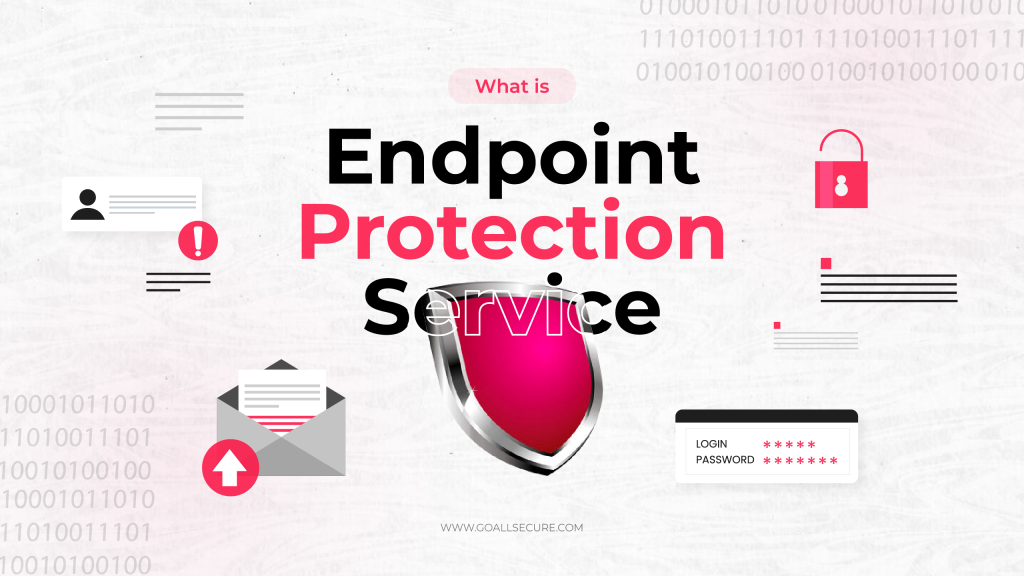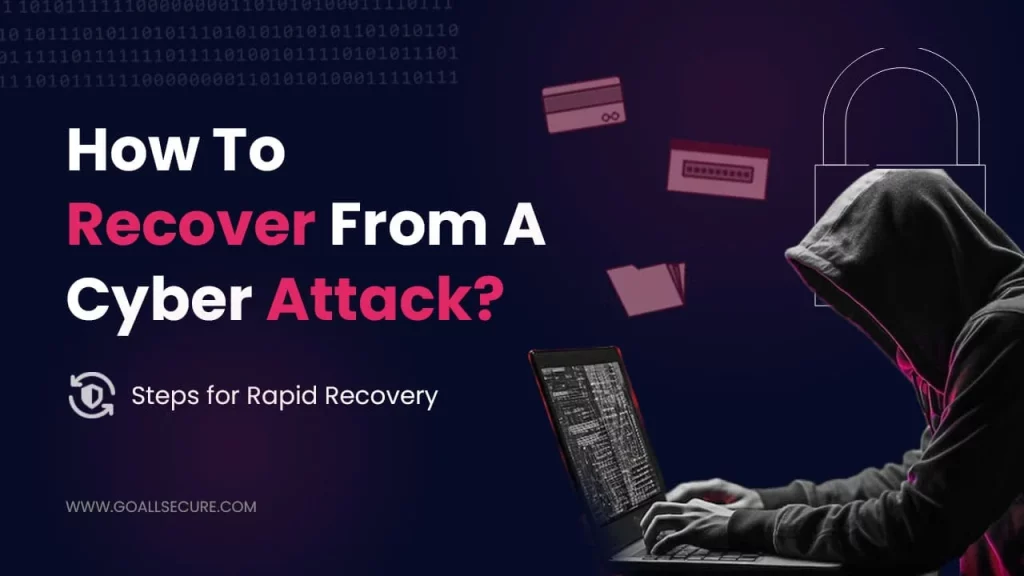Cyber attacks are disastrous for all sizes of businesses. According to a security report on most recent data breaches, the average cost of a data breach in 2024 will cross an astounding $4.24 million per event, the highest average cost in the report’s history. This is a scary figure, and when you consider that malware attacks are expected to rise by about 400% in 2024, according to security analysts’ research, businesses need to be concerned about these risks. Businesses must be ready for the long-term effects of cyber disasters, as it is evident that they have more consequences than just a temporary drop in stock price. A systematic incident response mechanism and a proactive cyber security measure have proven to be helpful. Although such events can be avoided with robust security protocols and careful planning, your business must still be ready to recover from mistakes. In this blog, we’ll list seven essential components to recover from a cyber attack, and help you preserve business continuity, and reduce expensive downtime. Keep reading to discover the steps to recover from a cyber attack rapidly.
The Impact of Cyber Attacks on Businesses
The threats associated with cyber space are increasing. According to a report, a startling 83% of businesses had multiple data breaches in 2023. Another report states a 13% increase in ransomware attacks overall, equivalent to the rise over the previous five years put together. The issue is becoming more and more severe for businesses. The impacts of these cyber attacks are lethal for businesses. It is often known that a cyber attack, particularly one that occurs quickly, can cause an organisation’s stock price to plummet. Following a data breach, publicly traded corporations saw an average fall in stock values of 7.5% and a mean market cap loss of $5.4 billion. What’s even more troubling is that, if these companies could restore their stock values to pre-breach levels at all, it took an average of 46 days to do it.
It’s becoming more and more clear how long-lasting cyber catastrophes are for businesses. A cyber attack will, first and foremost, directly deplete a company’s resources, raising operating expenses. Companies frequently incur indirect costs from cyber attacks in addition to direct financial losses, such as the potential for a significant disruption in business operations that could lead to lost revenue. Businesses that experience more severe intrusions may see a substantial decline in their brand equity. Clients and vendors alike can feel less comfortable entrusting their private data to an organisation whose IT system has had at least one outage. Out of sheer fear, numerous businesses no longer retain clients’ financial and personal data, including credit card details, Social Security numbers, and dates of birth. It is crystal clear that cyber crime affects companies in ways beyond simply financial ones. To make sure that sensitive data is secure, businesses have started reconsidering the way they gather and maintain data.
Importance of Rapid Recovery Strategies
Cyber hazards are constant in our increasingly digital environment, and the repercussions can be dire. The consequences of a cyber attack can be disastrous for both businesses and individuals, ranging from reputational harm to financial loss. According to a recent survey, over 55% of large organisations globally cannot manage cyber attacks or lessen their impact effectively. Meanwhile, another survey found that 83% of organisations experienced multiple data breaches in 2023. The data is sufficient to prove that rapid recovery strategies are necessary for businesses. A rapid plan to recover from a cyber attack helps keep your staff composed and concentrated for business continuity. It ensures that your staff is prepared and knows what actions need to be taken if your company ever faces a data breach.
In the face of growing public scrutiny, there may be tremendous pressure to resume operations when your company has downtime as soon as possible. Your IT workers may get more anxious and stressed as a result, which could lead to a hastily put together or inadequate cyber recovery solution. However, a thoughtfully curated recovery strategy can resolve all of it for your business. Cyber criminals typically share information, just like your teams do on a daily basis. Therefore, if you do not immediately take the correct action and completely contain the breach, there is a strong probability that one of these bad actors may attempt to re-infect your company. But, it is feasible to recover from the fallout of a cyber attack and lessen the harm with a well-thought-out recovery strategy. The future of your business may depend on having a well-thought-out cyber security incident response and recovery plan for a range of attack scenarios.
7 Essential Steps for Rapid Recovery From A Cyber Attack?
Preventing a cyber attack before it occurs is the easiest way to recover from it. On the other hand, you must act quickly to recover if you have been compromised. The foundation of a successful response is having a plan. Without one, you won’t know where to go and will heal more slowly. The attack’s type, variation, and particular circumstances will determine your strategy and level of efficacy. To make the process of recovering from a cyber event less tiresome, a rapid recovery strategy is a must for any business. The incident recovery plan should outline all the actions your company needs to do in order to recover as quickly and painlessly as possible. It should also explicitly assign duties to teams and individuals. Your strategy should include both short-term remediation measures and long-term preventative measures to stop future attacks on your business.
So, how can your business recover from a cyber attack? Well, we have a step-by-step guide for you to follow. These steps outline many phases of recovery. There are phases for impact management and business recovery after the first event triage. In an endeavour to manage connections with customers and third parties, enhance cybersecurity, and reconstruct operations, a wide range of business functions are mentioned in these stages.
Step 1: Assess the Attack
Following a data breach, you should first identify the affected systems and take immediate action to contain the attack on its track. Next, identify the type of cyber attack as it will help manifolds accurately respond to cyber attacks. You might be tempted to erase everything, but keeping track of the evidence is essential to determine how it happened and who was at fault. Here are some quick actions you should take to try to stop a cyber breach:
- Cut off your internet
- Turn off remote access
- Keep your firewall settings in place
- Install any available fixes or security updates
- Modify your passwords, and all compromised or vulnerable passwords should be changed right away
Step 2: Contain the Attack
The next course of action ought to be to limit the breach. A lot of breaches aim to give attackers access to a backdoor into the systems and networks of an organisation, allowing them to gradually harvest valuable data without being detected or even launch more cyber attacks from within. Information security teams must determine what has been accessed and how it has been accessed and terminate all access in order to stop hostile actors from causing more damage. Once you have identified the affected systems, take immediate action to isolate them so that no other servers or devices become infected. Let your security experts attempt to neutralise the threat by isolating the attack as much as feasible. This could entail rerouting network traffic, modifying user login credentials, blocking remote access, and unplugging impacted systems or networks from the internet.
Step 3: Restore Systems and Data
The best way to restore data is through backups. Still, more methods exist for getting your data and systems back and running. Windows and other operating systems come with built-in recovery tools. On occasion, the Windows System Restore tool might return settings to a previously created recovery point. But modern ransomware frequently corrupts and disables these kinds of programmes. Numerous third-party solutions are available to recover damaged files and retrieve corrupted data from storage media. The type of ransomware affecting your system determines the software’s efficacy. The software will only work if the ransomware is familiar. Security researchers may have previously cracked the encryption technique, depending on the type of ransomware. Decryption tools use algorithms to break encryption and unlock your data.
Step 4: Investigate the Root Cause
After eliminating the threat, it’s critical to evaluate networks and systems to see how best to minimise any potential threats. This entails examining all data to see if any of it is impacted, missing, or both and determining whether it can be recovered. It is preferable to limit access to only those essential workers who have the authority to approve functionality to prevent reinfection of the restored data. Additionally, infrastructure could need to be modified, including hardware replacement or the reinstallation of operating systems and programmes. Patch all vulnerabilities as part of the review process, paying particular attention to the ones that led to the attack or data breach.
Prior to fully activating and re-establishing connectivity between the impacted systems and the network, the information security team must ensure that all systems are operational and that the cyber threat has been eradicated. Finding the source of the breach within your particular facility is also necessary, regardless of whether you were the only victim or a part of a larger attack, so you may take steps to help stop this kind of attack from occurring in the future. You can determine how the breach started by reviewing your security data logs via your firewall or email provider, your antivirus software, or your intrusion detection system.
Step 5: Notify All Stakeholders
It is imperative to ascertain the potential affected parties of the security breach, which may include staff members, clients, and outside suppliers. Determine which personal data, such as date of birth, mailing addresses, email addresses, and credit card numbers, were accessed or targeted in order to gauge the severity of the data breach. Share the situation with your employees and establish explicit permissions for team members to communicate about the matter internally and externally. You and your staff must stay in sync as your company recovers from a data incident. Demonstrate your commitment to open communication with your clients by answering inquiries from impacted parties. In order to keep your interactions with your customers professional and positive, communication will be crucial.
Get in touch with your cyber insurance agent as soon as you can to find out how they can support you with the steps to take following a cyber attack. The purpose of cyber insurance is to aid in the process to recover from a cyber attack or data breach. Although a data breach can be distressing, with appropriate precautions, your company will be more equipped to recover. In the future, regular security audits should be carried out to lessen the possibility that an incident would recur.
Step 6: Implement Security Enhancements
Replace outdated technology and systems with reliable ones and install security updates when needed. Seek for automated systems with alert choices that are practical, highly scalable, and integrated. Think about adding internal or external products or services to improve security capabilities. Verify the accuracy of the data you still have, and use backups if you have them. Depending on your company’s needs, fully backup all the data on every computer and mobile device once a day, once a week, or once every hour. Analyse the extent of information alteration or the consequences of information loss in a loss event.
Though it is possible to heal, prevention and preparedness are essential. Investing in more robust security is the best defence against the disastrous effects of a ransomware breach. Among the few things we advise doing are:
- Solid backup plan
- Enable multifactor authentication or MFA
- Change default passwords
- Implement centralised logging
- Keep a close eye on Microsoft Active Directory (AD)
- Implement cyber security training
- Update and patch systems regularly
Step 7: Review and Document Lessons Learned
Conducting a comprehensive investigation into the security incident is the last stage in making sure it doesn’t happen again. The review also helps you understand what aspects of your security team’s reaction to this security breach went well. Not only is your firm impacted when it is the target of a cyber attack, but assurance, commitment, and compliance with numerous legal obligations will also be demanded from your suppliers, customers, providers, and other parties. Consequently, it’s critical to provide a detailed and practical answer to the problem and enhance your data security protocols.
Practice, practice, and more practice! IT teams have extreme pressure to recover from a cyber attack. Costly errors will occur in the absence of a well-designed plan that has been meticulously recorded and practised numerous times. Automate as much as you can to reduce human error and increase recovery time and reliability. Analysing your security flaws and finding ways to strengthen your cyber security protocols are essential to your business’s safety.
Consider yourself in the position of having recently learned that your company has been hacked. You are unaware of the attack’s origin, the degree of the harm, or the financial burden of recovering from it. Having a disaster recovery plan is essential because it allows you and your team to implement a quick and well-organised crisis resolution plan. Any successful cyber attack has the potential to destabilise your workers and network, which could delay your response time. Honestly speaking, you do not want to experience the risks of not having a disaster recovery plan. Let’s look at some potential implications of not having a disaster recovery plan to better understand why having one is so vital.
- Data Loss
- Business Interruption
- Expensive Recovery
- Losing Clients, Vendors, and Partners
It’s time to act now if your organisation doesn’t have a recovery plan. Finding the vulnerabilities and assisting your company in successfully regaining control of its cyber security after an attack is imperative. Regardless of whether you choose to hire an internal team of cyber security specialists or contract out your cyber security needs, it would be best if you did so immediately. You can trust GoAllSecure for all cyber essentials. Our experienced team of cyber security specialists will fit your budget and business needs. If you have any queries regarding rapid recovery after a cyber attack, contact us at +91 85 2723 7851 or +44 20 3287 4253.

















 TRAVEL & HOSPITALITY
TRAVEL & HOSPITALITY HEALTHCARE
HEALTHCARE RETAILS & ECOMMERCE
RETAILS & ECOMMERCE BANKING & FINANCIAL
BANKING & FINANCIAL AutoMobile
AutoMobile MANUFACTURING
MANUFACTURING FOOD
FOOD EDUCATION
EDUCATION



